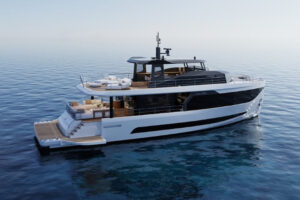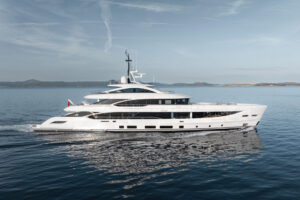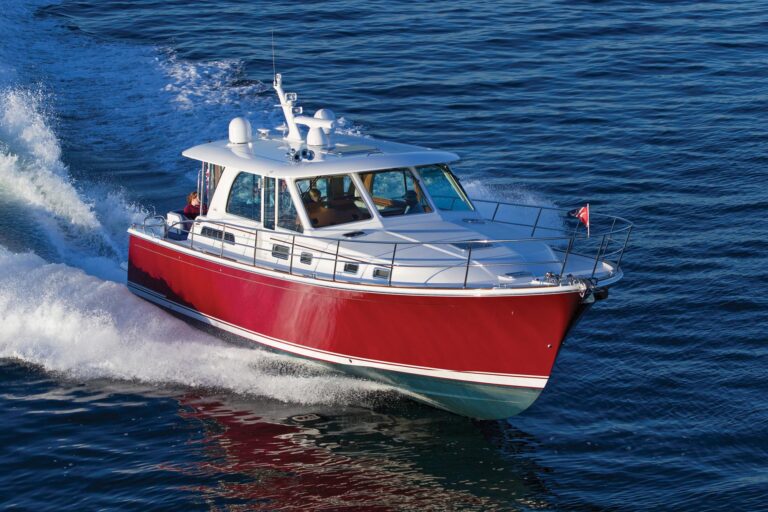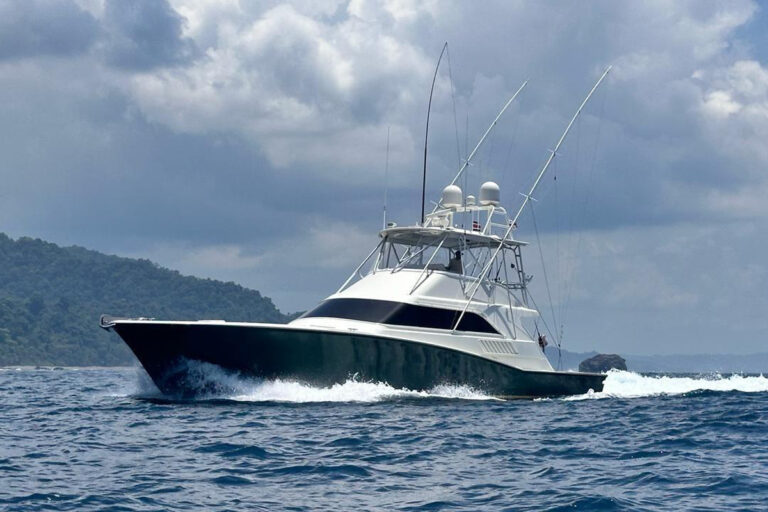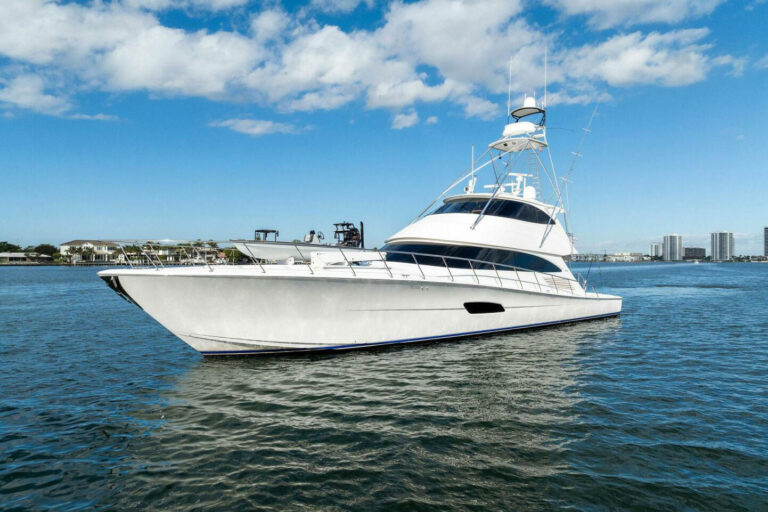I will never forget that time in the 1970s when a buddy of mine bought one of the first Ocean Yachts. He jumped from a simple, stout 31-foot sportfisherman with a solid pedigree to a 46-footer whose name was not yet familiar. As it turns out, she was faster than just about anything her size and offered uncommon levels of luxury and accommodation-all that, with less horsepower than you would expect and a price that encouraged even the fiscally cautious to move up. Ocean Yachts’ new 57 Super Sport mirrors this proven formula and the company’s skill in applying it.
The key to Ocean Yachts’ success was its early acknowledgement that for those who fish or cruise, speed over ground is an asset. Though lately the herd has caught up in terms of speed, Ocean Yachts has not lost its touch. At 2340 rpm, the pair of 1,300 hp MANs on hull number one delivered a top speed of 36.9 knots in a 3-foot chop off Palm Beach, Florida. This is quite competitive, considering we had a full load of fuel, fishing gear and cruising supplies on board. At 1800 rpm I recorded a speed of 29.5 knots, and the MAN electronics indicated a fuel burn of 76.6 gallons per hour. The 57 can also be more conservatively powered for a top speed of 33 knots. While the MANs rumble a bit at idle speed, they deliver horsepower on demand without hesitation or clouds of black smoke. The 57 rises easily on plane, and she took a bit less than 30 seconds to reach maximum speed. Thanks to Hynautic power steering, she cuts tight turns with a light hand on her wheel. At low speed, she is stable and maneuverable. I recommend the optional trolling valves, particularly for those who chase spindle beaks, as the 57 is a bit peppy at idle.
Her bridge is efficient and comfortable. The pod-style helm from Ocean Yachts is fitted with engine instrumentation under glass, a tournament-style wheel and cast aluminum single-lever controls interfaced with Glendinning electronics. Covered electronics bays are to port and starboard, as are hamper-style cabinets in the console for an electrical sub-panel and a radio. Drop-down panels in the factory hardtop accommodate a radio and electric teaser reels. Tournament-style helm and companion seating provide a comfortable view of the cockpit, and a U-shape lounge area with integral stowage is forward. A rod locker alongside the helm would be handy for tossing a lure to schooling dorado, and the bridge freezer is perfect for preserving them. The 57 is also available with an enclosed bridge and an internal spiral staircase-an $83,500 option that would perhaps appeal more to those who cruise.
The cockpit, which has a full-size fighting chair, complements the tournament theme with soft corners and teak covering boards. There is a gate-style swinging transom door, a transom live well and lockers for deck gear beneath the coaming. Two under-sole fishboxes are fitted with macerators that discharge overboard. Aboard our test boat, one fishbox was rigged with an Eskimo Ice machine, and the other served as a freezer. The bulkhead console has additional refrigeration, a drink box, engineroom access and a tackle center with a sink.
The story of any Ocean Yachts boat would not be complete without mention of naval architect Dave Martin, who has penned each of the company’s models from day one. Martin began his career in 1948 at age 18, when he worked at Egg Harbor. Later, he moved to Pacemaker. When Jack Leek launched Ocean Yachts in 1977, he brought Martin aboard. Today, Ocean Yachts and Martin’s magic formula are in the hands of John E. Leek III.
Martin’s easily driven hull form and his understanding of weight and balance have resulted in designs that consistently meet their performance goals. The 57, too, is designed with higher speeds in mind. Her transom deadrise has been bumped up a bit from that of previous designs to 14 degrees. This allows for finer sections forward (softer ride) and improved performance in following seas. There are two lifting strakes instead of four, and they are spaced farther apart to optimize lift at increased speed. The strakes have a down angle that Martin found relieves suction on the bottom and improves water flow to the propellers. While some designers prefer shallow trim angles (about 3 degrees), Martin feels they are undesirable for running inlets and in following seas. I agree. The 57 has a slight bit of rocker in her bottom and is designed to run at 5 degrees when at speed. Trim tabs are used to adjust the running attitude for different sea conditions.
The 57’s hull and superstructure are built in female tooling. Woven and stitched reinforcements are handlaid with polyester resin. Fiberglass stringers, and marine plywood bulkheads and web frames support the bottom. Divinycell foam coring stiffens the hull sides, exterior decks and superstructure.
Under the cockpit and forward, fuel is carried in aluminum tanks that feed a day tank on centerline in the engineroom. This is a major improvement on the wing-tank arrangement that is common on some Ocean Yachts models. The company has taken heat in this department in the past and seems to have responded effectively. The elimination of wing tanks makes servicing the outboard side of the engines easy. Even with a second generator, the 57 should have room to move around. Considering this and the attention devoted to systems and detailing, the 57’s machinery space is the best I have seen from the builder.
The saloon has an L-shape settee with internal stowage for rods and cruising gear. An open galley area has under-counter refrigeration, and the adjacent dinette is larger than most I’ve found on convertibles this size. The accommodation space benefits from a step in the galley sole. The three-stateroom/three-head arrangement includes a full-beam master suite that tucks neatly beneath the galley and dinette area.
Our test boat, with 1,300 hp MANs, electronics and a long list of options, was $1,574,111. She could be conservatively outfitted, but my bet is most will load her up with electronics and fishing or cruising gear. Whatever you prefer, with the 57 Super Sport you’re bound to come out ahead.
Contact: Ocean Yachts, Inc., (609) 965-4616; www.oceanyachtsinc.com.


